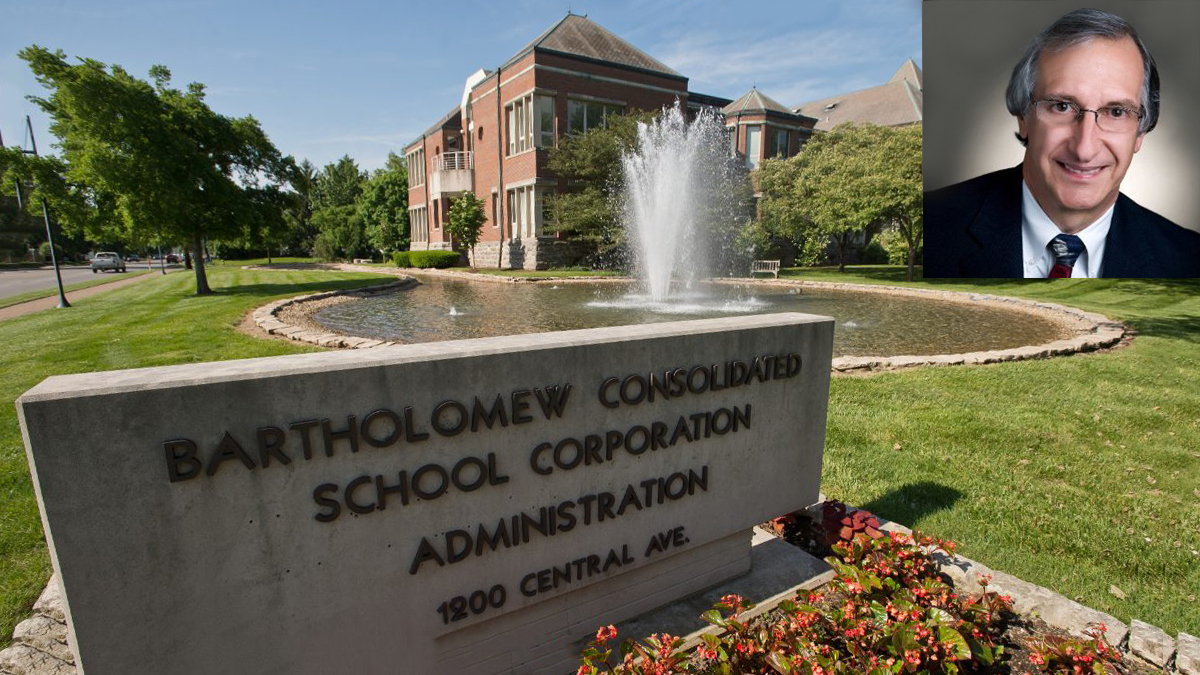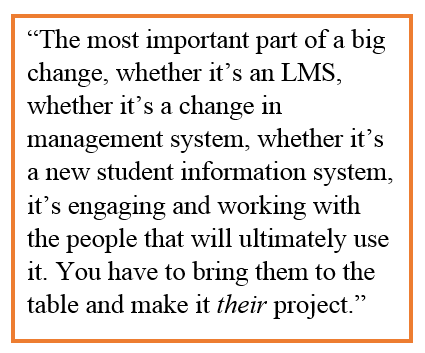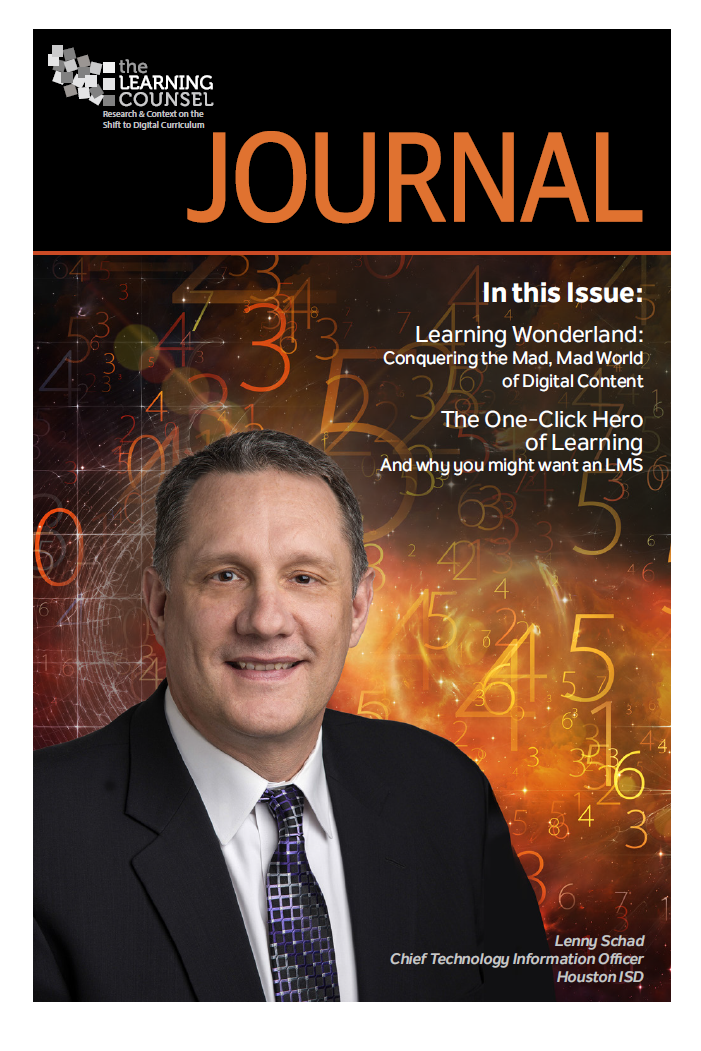“One of the biggest things I do today, and one of the things I would say is one of the largest changes in technology’s roll in education, is how closely we now work with curriculum. It begins by answering, with them, what are all the digital materials we will use. Then, how do we support them from a technology standpoint? What do we need to do to deliver the curriculum when we’re no longer using textbooks?”
Mike Jamerson is the Chief Technology Officer of Bartholomew Consolidated School Corporation in Columbus, Indiana. The Corporation oversees th e administration of all schools, school-related building projects, curricula, scholarships and school technology for thirteen elementary and middle schools and two high schools.
e administration of all schools, school-related building projects, curricula, scholarships and school technology for thirteen elementary and middle schools and two high schools.
Mike has been with the district for 18 years and been working in information technology for over 40 years.
Bartholomew is a 1-to-1 district. There are 12,000 devices deployed that need service and must follow every student as they move. “These are relatively new considerations and hurdles to understand and develop solutions for.”
Mike pointed out that a tangent of this new operational modality is student data privacy. He’s become extremely versed in the legal and contract side of tech and Big Data. “And of course the next thing we had to confront was equity—connectivity. Every student has to have access. It’s something we’ve not fully solved yet for every home in the district. But it’s a conversation we’re having.” The district is working closely with local area businesses, churches and fire departments, to try and enlist them in providing access. Particularly because a ‘snow day’ is all too common in Indiana, and now school doesn’t have to stop—lessons are provided via their Learning Management System as the delivery platform.
“Our LMS is the central point for the repository of digital curriculum that’s going to be used. It goes so far as being a mechanism to deliver Phys-Ed. You wouldn’t think of that. But consider one of our ‘snow days.’ We expect our PE teacher to deliver instruction. They use the LMS for videos to instruct students on how to do the exercises at home.
Mike shared another story to point up where their LMS facilitated changing a little student’s life:
“We had a student who was a self-selected mute. This is a Kindergarten student who was capable of speaking but would not speak. Whether she was embarrassed or didn’t think that her voice sounded right, there may be many different reasons, but she would not speak. So the teacher used the LMS to videotape questions to the student and taught the student how to view the video and, how to record her response to the video. Slowly, but steadily, they expanded how she communicated with people using the Learning Management System to both deliver instruction and questions and have her deliver her responses. By January, the student was teaching 6th graders how to do videos—and speaking. The capstone of this is, in May of this past year she actually spoke to the school board and an audience of about 100 people.
“The other piece that’s really important, our district is ‘universal.’ We adopted the Universal Design for Learning almost ten years ago as our instructional framework and so when we look at instruction we always think of our instructional delivery in terms of barriers that the students might have and how we can provide them multiple means of getting engaged in the information—of presenting the information to the student.
“For example, we can say ‘Here are the ways that you can learn or get this information; you can listen to the audio of a lecture, you can watch a piece of video, you can read the textbook.’ All of those are ways a student can view this material through the Student Learning Management System.
“We also give them opportunities to present finished assignments back through the LMS. It might be a test, it might be a paper that they’ve written, it might be a PowerPoint or some other kind of mechanism, it might be a video presentation that they’ve assembled to show that. They can upload that and deliver that back to the teacher through the LMS platform.
“We brought our LMS platform online to the entire district in august of 2015 and by well into the second semester, if you looked at any given week, 95% of our students and staff had accessed it. So it’s been heavily used. We also use it for our Staff PD so it’s become an essential tool for us.”
This story is excerpted from the r ecently published Journal Learning Wonderland: Conquering the Mad, Mad World of Digital Content which can be downloaded here.
ecently published Journal Learning Wonderland: Conquering the Mad, Mad World of Digital Content which can be downloaded here.











